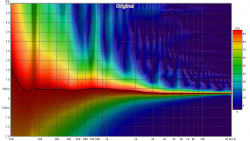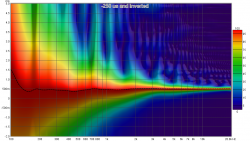luigi191
New Member
Thread Starter
- Joined
- May 9, 2018
- Messages
- 14
More
- Preamp, Processor or Receiver
- NANO DIGI
- Main Amp
- DIY
- Front Speakers
- DIY SCANSPEAK
hi guy
could you help a poor french guy ? and sorry for my language !
i would like to adjust a new diy loudspeaker (2 way whith SCANSPEAK drivers) using REW and USB UMIK-1
my first measure is for time alignment betweeen drivers (acoustic timing reference on Right High , measure for Right High and Right Low/Mid )
but i have a problem with tweeter : setting start freq at 1000 and end freq at 20000 , results are incoherent (sometimes 0.27ms and fisrt negative peak sometimes 0.31 ms and second peak ) Randomly for 10 measure !!


So i'm unable to know the good value for delay and if the phase is inverted or not !
On the over side, if i put start freq at 2000 all results are uniform for 10 measure : delay 0.31ms and positive peak
i hope someone will understand me
could you help a poor french guy ? and sorry for my language !
i would like to adjust a new diy loudspeaker (2 way whith SCANSPEAK drivers) using REW and USB UMIK-1
my first measure is for time alignment betweeen drivers (acoustic timing reference on Right High , measure for Right High and Right Low/Mid )
but i have a problem with tweeter : setting start freq at 1000 and end freq at 20000 , results are incoherent (sometimes 0.27ms and fisrt negative peak sometimes 0.31 ms and second peak ) Randomly for 10 measure !!
So i'm unable to know the good value for delay and if the phase is inverted or not !
On the over side, if i put start freq at 2000 all results are uniform for 10 measure : delay 0.31ms and positive peak
i hope someone will understand me


















